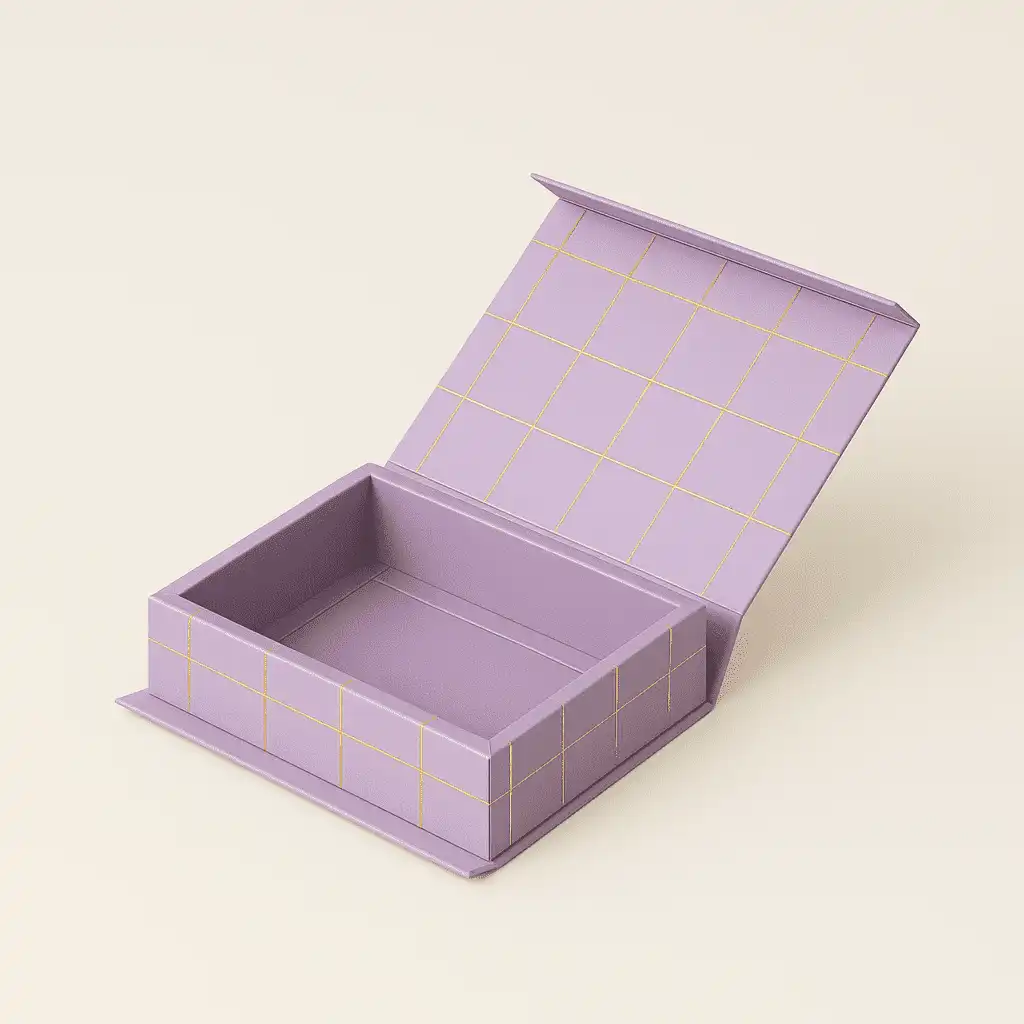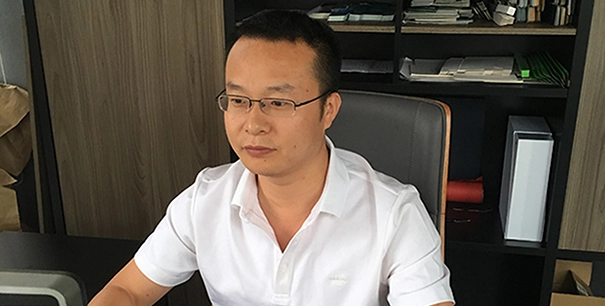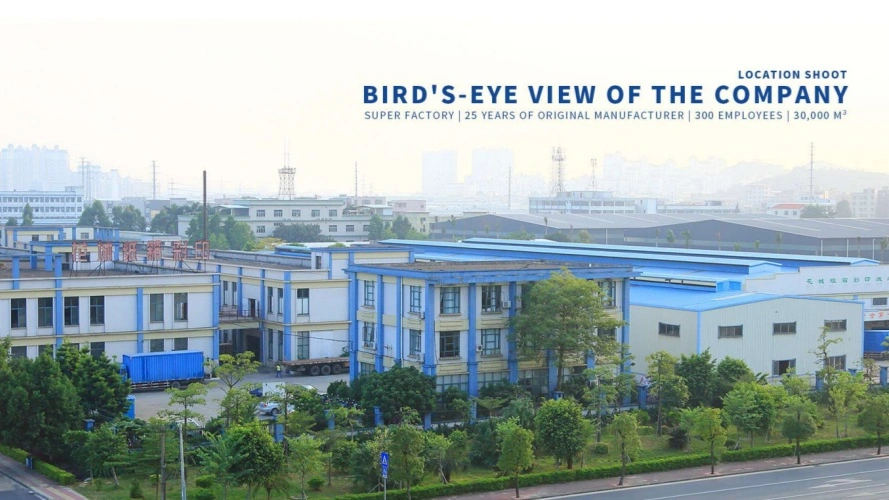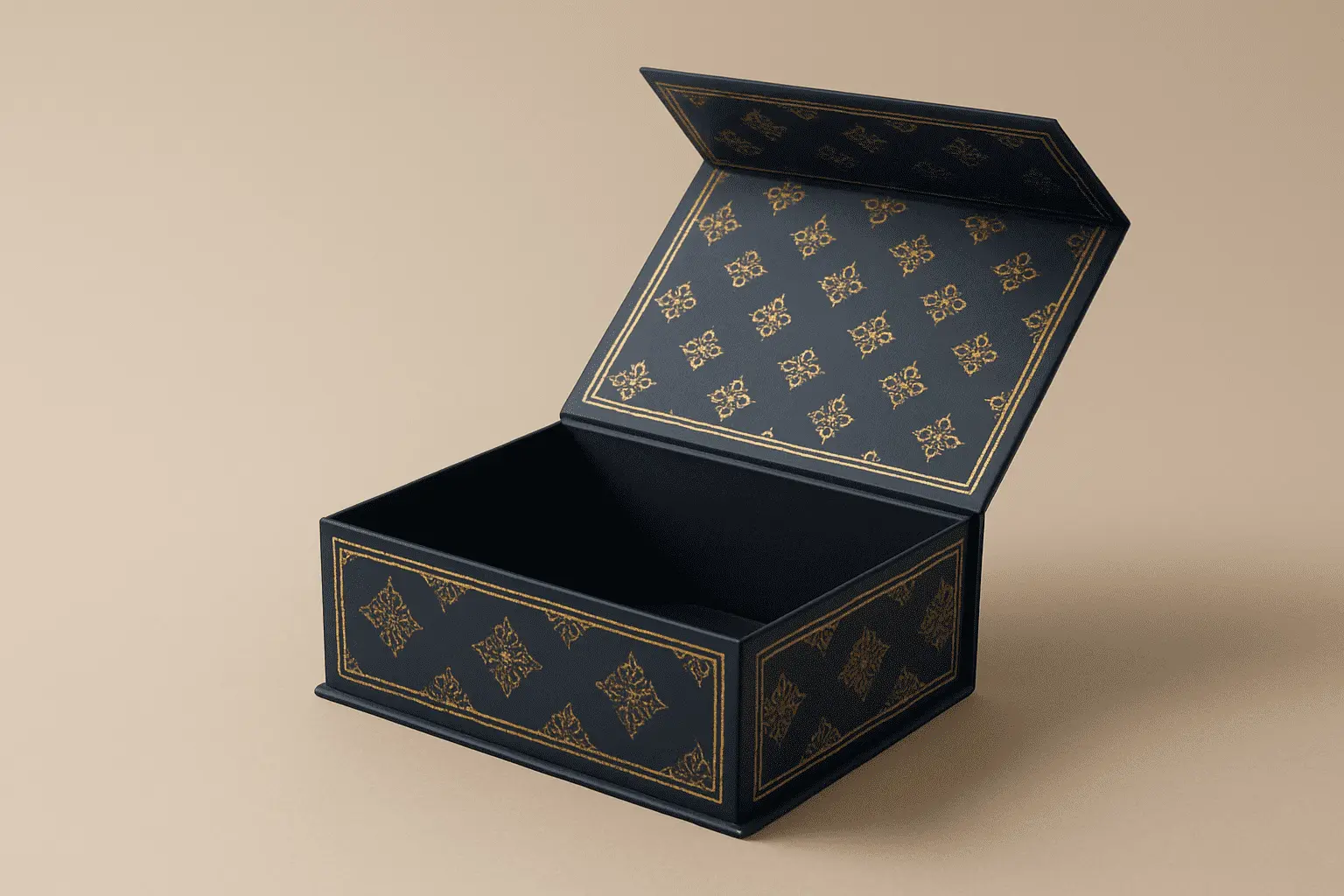Best Packaging Options for Subscription Boxes: Rigid, Folding or Corrugated
The subscription box industry has experienced explosive growth over the past decade, transforming how consumers discover and purchase products across various sectors. From beauty and food to technology and lifestyle products, businesses are increasingly turning to subscription models to build lasting customer relationships. However, the success of any subscription service heavily depends on one critical element: the packaging experience. Choosing the right subscription box packaging is not merely about containment and protection—it's about creating memorable unboxing experiences, ensuring product safety during transit, maintaining cost-effectiveness, and aligning with sustainability goals. The three primary packaging options dominating the market are rigid boxes, folding cartons, and corrugated solutions, each offering distinct advantages for different business models and customer expectations.

Understanding Rigid Packaging Solutions for Premium Subscription Services
Luxury Appeal and Brand Positioning Through Rigid Boxes
Rigid packaging represents the pinnacle of premium subscription box packaging, offering unmatched structural integrity and sophisticated presentation that elevates brand perception. These boxes are constructed using high-quality paperboard materials like SBS C1S (Solid Bleached Sulfate – Coated One Side) or SBS C2S, which provide exceptional print surfaces for vibrant graphics and premium finishes. The manufacturing process involves precise die-cutting and assembly techniques that create sturdy, geometric structures capable of withstanding considerable handling without compromising their aesthetic appeal. For luxury subscription services in cosmetics, jewelry, or high-end lifestyle products, rigid boxes communicate quality and exclusivity that justifies premium pricing. The substantial feel and impressive visual impact of these packages create anticipation and excitement among subscribers, directly contributing to customer retention and word-of-mouth marketing. Modern subscription box packaging in the rigid category often incorporates magnetic closures, ribbon pulls, or foam inserts that enhance the unboxing ritual, transforming a simple delivery into a memorable brand experience.
Structural Engineering and Material Specifications
The engineering behind rigid subscription box packaging involves sophisticated material selection and structural design considerations that ensure optimal performance across various shipping conditions. Premium materials like metallic-finished paperboard or specialty coated stocks provide the foundation for exceptional print quality and tactile experiences. The typical construction utilizes board weights ranging from 1200-2400 GSM, offering superior crush resistance and dimensional stability compared to folding alternatives. Manufacturing processes include precision cutting, scoring, and assembly using specialized adhesives that maintain structural integrity while allowing for efficient flat-pack shipping to reduce logistics costs. Quality control measures ensure consistent corner construction, proper fold alignment, and smooth surface finishes that meet the exacting standards required for premium subscription box packaging. Advanced surface treatments such as soft-touch lamination, spot UV coating, or foil stamping can be incorporated to create sophisticated tactile and visual effects that reinforce brand positioning and perceived value.
Cost Considerations and Market Positioning Strategy
While rigid packaging commands higher per-unit costs compared to alternative solutions, the investment often generates substantial returns through enhanced customer satisfaction and reduced churn rates in subscription box packaging applications. The premium nature of rigid boxes allows businesses to justify higher subscription fees and positions the brand in competitive luxury market segments. Production economies of scale become crucial factors, as minimum order quantities for rigid packaging typically require larger commitments but deliver better unit pricing for established subscription services. Businesses must carefully evaluate the relationship between packaging costs and customer lifetime value, considering factors such as retention rates, average order values, and brand equity development. Strategic sourcing from established manufacturers with advanced production capabilities can optimize cost structures while maintaining quality standards essential for successful subscription box packaging programs.
Folding Carton Solutions: Balancing Quality and Efficiency
Versatile Design Capabilities and Customization Options
Folding cartons represent the most versatile category in subscription box packaging, offering exceptional design flexibility while maintaining cost-effectiveness suitable for various business models. These packages utilize materials ranging from CCNB (Clay Coated News Back) for budget-conscious applications to premium SBS grades for higher-end presentations. The manufacturing process allows for complex die-cut designs, multiple closure mechanisms, and intricate structural features that can accommodate diverse product ranges within a single subscription service. Advanced printing technologies enable full-color graphics, specialty inks, and multiple finishing techniques that create visually compelling packages capable of standing out in competitive markets. The flat-shipping characteristics of folding cartons provide significant logistics advantages, reducing warehouse space requirements and shipping costs while maintaining the structural integrity necessary for reliable product protection. Modern subscription box packaging in folding formats often incorporates innovative features such as easy-open perforations, resealable closures, or modular designs that enhance user convenience and encourage package reuse.
Production Efficiency and Supply Chain Optimization
The production characteristics of folding cartons make them ideal for subscription box packaging operations requiring rapid scalability and flexible order quantities. Manufacturing processes utilize high-speed converting equipment capable of producing large volumes with consistent quality standards, enabling businesses to respond quickly to subscriber growth or seasonal demand fluctuations. The standardized nature of folding carton production allows for streamlined supply chain management, with shorter lead times and more predictable delivery schedules compared to rigid alternatives. Quality control systems can monitor critical parameters such as fold accuracy, adhesive application, and print registration to ensure consistent performance across production runs. The compatibility with automated packaging equipment enables efficient fulfillment operations, reducing labor costs and improving throughput in subscription box packaging workflows. Strategic supplier relationships can provide additional advantages such as inventory management services, just-in-time delivery programs, and collaborative design development that supports business growth objectives.
Environmental Sustainability and Recycling Benefits
Folding cartons excel in environmental sustainability metrics, making them increasingly attractive for subscription box packaging applications where eco-consciousness influences consumer purchasing decisions. The materials used in folding carton construction are typically derived from renewable forest resources and can be manufactured with high recycled content percentages without compromising structural performance. The production processes generally consume less energy and generate fewer emissions compared to rigid packaging alternatives, contributing to reduced carbon footprints for subscription services. End-of-life considerations favor folding cartons, as they integrate seamlessly into existing recycling infrastructure and break down efficiently in composting environments. Many manufacturers now offer FSC-certified materials and carbon-neutral production options that support corporate sustainability initiatives and appeal to environmentally conscious subscribers. The lightweight nature of folding cartons reduces transportation emissions and packaging waste, creating comprehensive environmental benefits throughout the subscription box packaging lifecycle.
Corrugated Solutions: Durability and Shipping Excellence
Superior Protection and Structural Integrity
Corrugated packaging stands as the workhorse of subscription box packaging, delivering unmatched protection capabilities essential for reliable product delivery across diverse shipping conditions. The fluted structure of corrugated materials provides exceptional cushioning properties that absorb impacts and vibrations during transit, significantly reducing damage rates and associated customer service issues. Various flute configurations—from E-flute (1.3-2.1mm) for compact applications to A-flute (6.1-6.4mm) for maximum protection—allow precise matching of packaging performance to specific product requirements. Double-wall constructions such as B/C flute or E/C flute combinations offer enhanced strength characteristics suitable for heavier products or challenging shipping environments. The manufacturing process creates packages with predictable performance characteristics, enabling reliable protection across varying temperature, humidity, and handling conditions. Modern corrugated subscription box packaging incorporates advanced design features such as internal dividers, foam inserts, or custom die-cut configurations that secure products while minimizing movement during shipping.
Cost-Effectiveness and Supply Chain Advantages
The economic advantages of corrugated packaging make it an attractive choice for subscription box packaging operations focused on scalable growth and operational efficiency. Raw material costs remain relatively stable due to the established supply chains and recycling infrastructure supporting the corrugated industry. Manufacturing processes are highly automated and efficient, enabling competitive pricing even for smaller order quantities typical of emerging subscription services. The lightweight nature of corrugated materials reduces shipping costs while maintaining structural performance, creating favorable unit economics for subscription box packaging applications. Inventory management benefits include compact storage requirements for flat-shipped blanks and predictable shelf life characteristics that support efficient supply chain planning. The standardized sizing options and established converting capabilities enable rapid prototyping and production scaling, supporting business growth without significant capital investments in specialized packaging equipment.
Innovation in Corrugated Subscription Box Design
Contemporary corrugated subscription box packaging incorporates innovative design elements that enhance both functional performance and customer experience. Advanced printing technologies enable high-quality graphics reproduction on corrugated surfaces, supporting brand messaging and marketing objectives previously limited to folding carton applications. Specialty coatings and laminations can provide moisture resistance, enhanced print quality, or premium tactile experiences that elevate the perceived value of corrugated packaging. Structural innovations include easy-open features, tamper-evident closures, and modular designs that improve user convenience while maintaining package integrity. The integration of sustainable materials and water-based inks addresses environmental concerns while preserving the cost and performance advantages that make corrugated packaging attractive for subscription services. Emerging technologies such as digital printing and variable data capabilities enable personalization options that create unique experiences for individual subscribers, supporting customer engagement and retention strategies.
Conclusion
Selecting the optimal packaging solution for subscription services requires careful consideration of brand positioning, product characteristics, budget constraints, and customer expectations. Rigid packaging delivers premium experiences that justify higher price points and enhance brand equity, making it ideal for luxury subscription services. Folding cartons provide versatile design options and balanced performance suitable for diverse product ranges and business models. Corrugated solutions offer superior protection and cost-effectiveness essential for scalable operations and reliable delivery performance. The decision ultimately depends on aligning packaging characteristics with business objectives and customer value propositions in the competitive subscription box packaging marketplace.
Ready to elevate your subscription service with professional packaging solutions? Guangzhou Fetching Color Printing & Packaging Ltd. brings over 20 years of experience as a leading China subscription box packaging factory, serving 1,000+ loyal customers worldwide. Our 35,000m² facility with 300+ skilled employees specializes in comprehensive packaging solutions from concept to delivery. As a trusted China subscription box packaging supplier and China subscription box packaging manufacturer, we offer competitive subscription box packaging wholesale pricing and premium subscription box packaging for sale with transparent subscription box packaging price structures. Our advanced production capabilities include KBA106-(9+1) UV printing, Heidelberg XL162-6L systems, and AI-driven assembly lines ensuring exceptional quality and efficiency. Contact our packaging experts today at public@fetchingprinting.com to discover how our innovative solutions can transform your subscription box experience and drive customer loyalty.
References
1. Thompson, Michael R., and Sarah Chen. "Sustainable Packaging Solutions for E-commerce and Subscription Services." Journal of Packaging Technology and Research, vol. 34, no. 2, 2023, pp. 145-162.
2. Rodriguez, Elena M., James Patterson, and David Liu. "Consumer Preferences in Subscription Box Packaging: Impact on Brand Loyalty and Retention." International Journal of Marketing and Consumer Behavior, vol. 18, no. 4, 2023, pp. 89-107.
3. Anderson, Robert K., and Jennifer Walsh. "Corrugated Packaging Performance in E-commerce Distribution Networks." Packaging Engineering Quarterly, vol. 29, no. 1, 2024, pp. 23-41.
4. Williams, Amanda J., Thomas Brown, and Lisa Zhang. "Cost-Benefit Analysis of Premium Packaging Materials in Subscription Commerce." Business Packaging Review, vol. 42, no. 3, 2023, pp. 78-94.

Based on your location and order quantity, you will have the opportunity to receive a limited time free shipping promotion!

Corporate Purpose
